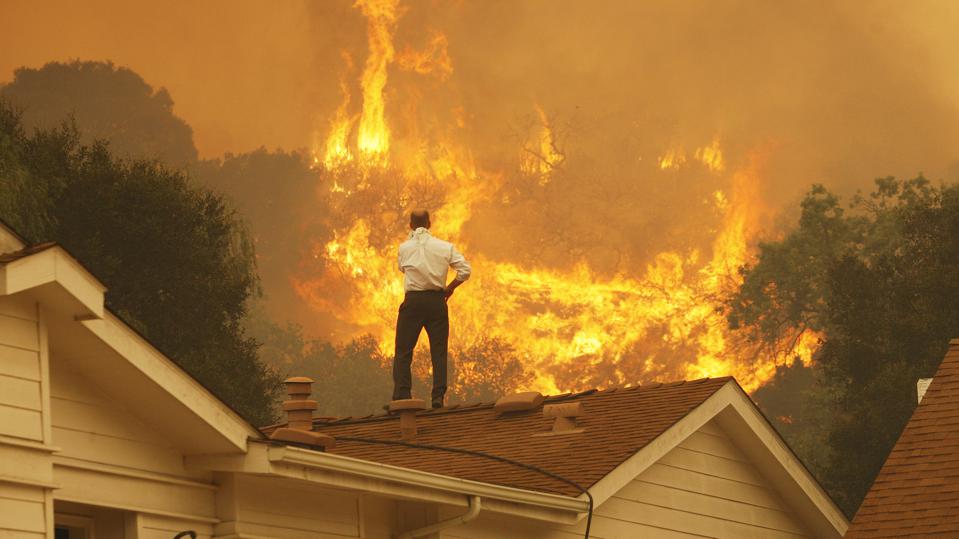According to data from the US Fire Administration (USFA), there were more than 1.29 million fires in the United States in 2019. These fires resulted in over 16,600 injuries, 3,704 fatalities, and $14.8 billion in losses. In spite of these startling figures, house fires have actually fallen over the last decade as families become increasingly aware of fire safety.
This article shares simple steps you can take to limit fire damage and minimize the risk of fire in the first place.
1. Regularly Test Your Smoke Detectors
Put simply, smoke detectors save lives. They provide an early warning system and give families precious time to escape in the event of a fire. According to National Fire Protection Association (NFPA) statistics, approximately 60 percent of home fire fatalities occurred in homes without working smoke alarms.
You should install working smoke detectors on each level of your home, ideally with one in each bedroom, with an additional detector in the hallway. They should be wired together so that if one goes off, they all do. The NFPA also suggests having a smoke detector in the kitchen. Note that it does need to be situated at least 10 feet away from the stove and other cooking appliances to avoid false alarms.
It is important to check smoke detectors each month and the batteries annually. After 10 years, homeowners are advised to invest in new detectors. This maintains a vital first line of defense against house fires.
2. Install Fire Ladders and Extinguishers
Multiple-story homes should have at least two fire ladders upstairs, kept in separate rooms in case one room is inaccessible due to fire. Older children should be shown how to set up the fire ladder, recapping at least once a year to ensure they remember how to use it safely. Fire extinguishers should be sited high up on the wall, so they are accessible to adults but out of the reach of children.
Not all fire extinguishers work in the same way. Read the directions carefully in advance. You are extremely unlikely to have the time to check the instructions in the middle of a real fire. Many local fire departments offer fire extinguisher training for homeowners. If you do have to use one, you need to aim towards the base of the fire and sweep back and forth across it, squeezing the lever smoothly and deliberately.
5. Plan Your Escape Route
As a family, it is important to plan your escape route and make sure every family member knows about it. Having a route planned is essential since, during a real fire, smoke can be incredibly disorientating, making it impossible to see where you are going.
For this reason, it is vital to keep exit routes free of clutter. If doors are double locked, it is crucial that the key is kept nearby in an accessible location. Everyone who lives there should know where it is.
6. Clear Lint from the Dryer after Every Load
Clothes dryers are a leading cause of house fires. One of the easiest yet effective measures you can take to improve home fire safety is simply clearing out the lint trap after every load.
Lint is incredibly flammable, presenting a real hazard when it accumulates in the vent of your dryer. It is important to make removing lint from the trap part of your laundry routine to minimize the risk of a dryer fire occurring in your home.
7. Exercise Caution When Using Space Heathers and Electric Blankets
You should avoid leaving space heaters unattended while switched on. It is also important to avoid placing anything flammable near the heater, maintaining at least three feet of clearance between the heater and any item that could combust.
Electric blankets should only ever be used flat. Leaving them folded traps heat, which could cause a fire. Like space heaters, electric blankets should never be left alone’s, particularly when on a mattress or other bedding. If you notice any wear or defects with the blanket or its wiring, replace it as soon as possible.
8. Teach Your Children Fire Safety
It is crucial for parents to teach children what to do if there is a fire in their home. A good place to start is pointing out where all the smoke detectors are located. Explain their purpose and let them hear what they sound like. For young children, the noise can be scary, so it is a good idea to let them hear it when there is nothing else going on, so they do not panic in an emergency.
Alongside running through your evacuation plan, you should teach children to stop, drop, and roll if their clothing or hair catches fire. In addition, many child fire deaths happen because kids are scared of the fire or firefighters and find a hiding place. Go on a tour of your local fire department, if possible, or watch an online video so that kids know what firefighters look like with their gear on and understand that they are there to help.

